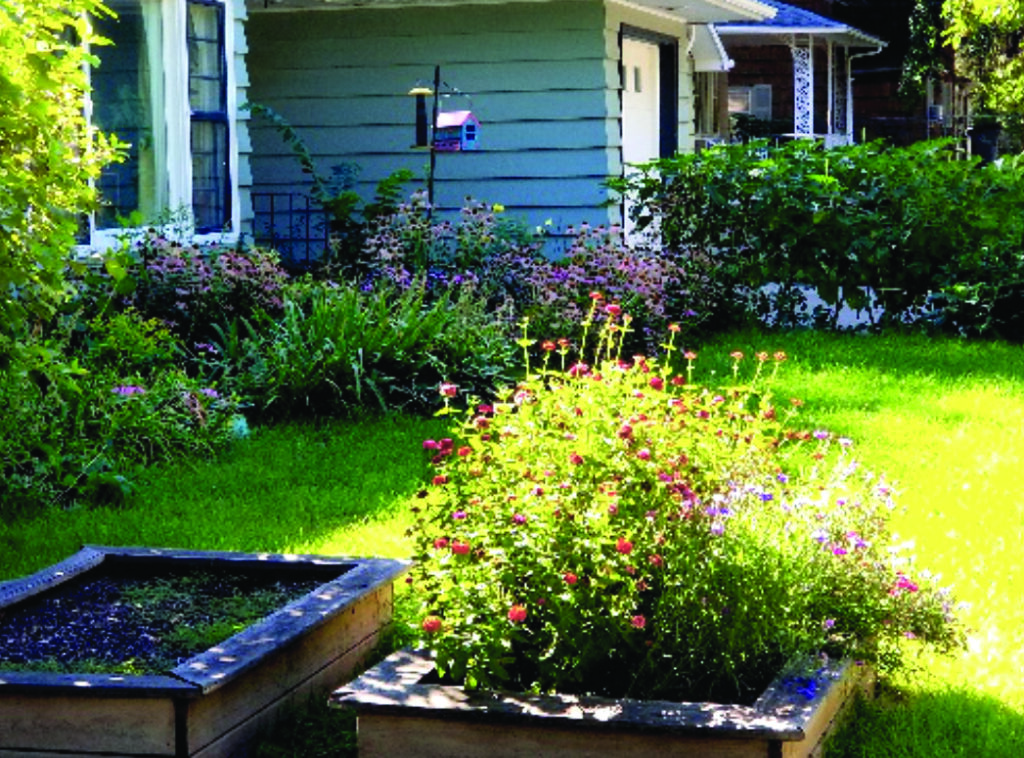moorhead city council

Natural plantings will be allowed without permits under a new rule considered by the City Council. (Photo/ Moorhead Planning Department.)
Nancy Edmonds Hanson
Native plants to be welcomed on city’s lawns The wildflowers and prairie grasses that once dominated the land where manicured lawns now rule could be making a comeback — however limited — under a change in Moorhead’s city code.
The Moorhead City Council unanimously approved the first reading of new rules stripping away the bureaucratic paperwork that has confronted homeowners who want to replace the turf grass that now covers most yards with hardier and more varied prairie natives. The replanting is permitted under the current city code, but only after stiff requirements have been met: The homeowner is required to file an application including a land use plan, a statement of intent, a legal description and a sworn oath that owners of all neighboring properties within 200 feet of their yard have been notified of their plans.
“We want to make it easier, but still have standards,” explains planning director Kristie Leshovsky, who brought the proposal to the council’s Oct. 24 meeting.
The proposed code change reflects a growing interest in natural plantings on both private and public lands within the city. According to Leshovsky, that shift to natural lawns and plantings was one of the top priorities of the hundreds of residents who helped shape Onward Moorhead, the city’s comprehensive plan for the next 10 years. Gathering input from Moorhead residents began in 2020. The complete plan — with recommendations grouped into six areas ranging from land use and economic development to mobility, parks and open spaces, sustainability and resilience, and arts, culture and placemaking — was adopted by the council earlier this year. (The entire plan can be viewed at www.cityofmoorhead.com/onwardmoorhead.)
“These priorities came from the citizens themselves,” the planning director emphasizes, citing the series of open houses, “walkshops” and online surveys that gathered input early in the process. “We don’t want to see them sitting on the shelf. We want to see them come to life around us.”
Natural plantings were, yes, a natural place to begin. Interest in returning the grasses and plants that long thrived on this landscape has been rising in recent years, spurred in part by the interest in providing nourishment for the bees and insects that we depend on to pollinate food crops and the rest of the green landscape. The benefits of the hardy natives, though, goes further. The deep-rooted species draw water and nutrients from far deeper in the soil. They stabilize the areas on which they’re grown, particularly river banks and other erosion-prone locales.
Returning naturally growing plants to the Moorhead landscape is nothing new. The city has partnered with Audubon Dakota since 2015 in its Urban Woods and Prairies Initiative, primarily along the Red River. The conservation group takes on the planting and maintenance of the restored sections for five years to get the transplants started. Most costs are covered by grants; the city’s share has been provided through in-kind services to prepare and manage the sites. “They’ve been an absolutely wonderful partner,” Leshovsky notes.
While homeowners spoke up about their own interest during the Onward Moorhead process, adoption of the new practices has been somewhat slower. The planning director knows of only one homeowner who has gone through the present application process. (“I hate to say it, but it’s very bureaucratic,” she admits.) Instead, she says, a growing number have “taken smaller bites,” installing plantings in gardens or smaller sections of lawn.
Some have taken advantage of the city’s decision to permit such landscapes on boulevards. That measure, adopted last year, will continue to require a permit because of the density of underground utilities, hydrants, cross walks and visibility issues along the street.
But when the new lawn code passes its second reading, the need for asking city permission to turn your lawn into a landscape reminiscent of older times will be eliminated altogether.
While the change does not affect city zoning regulations, Leshovsky brought the measure to the Planning Commission for its input. Members discussed whether to include a requirement for buffer zones between the new lawns and their traditional turf grass neighbors; they decided against that. Instead, the language includes prohibition of plantings that “spill onto other properties,” specifying “no encroachment or overhang onto sidewalks, curbs, the street and adjacent properties.”
While the native plants otherwise get more leeway on height, existing rules still apply to the turf grass lawns favored by the huge majority of homeowners. That grass must be mowed to less than 8 inches in height, and weeds — particularly those defined as noxious, the kinds with memorable names liek black swallow-wort, Grecian foxglove, Meadow knapweed and yellow starthistle — must still be hunted down and eradicated.
“We haven’t heard any pushback from people who oppose natural plantings on lawns,” Leshovsky says. “The interest is there, but people haven’t been rushing out to convert their yards. Those who do take this on tend to be very passionate. They do take on a lot of work, whether they’re planting on a small, medium or large scale.”
She adds, “The real work is in getting these areas started. Converting from turf grass to natural tends to require a higher initial investment. But then, once they get started, it switches. The cost of caring for these areas just goes down, down, down, while turf remains much higher.”
Those with questions about the new code can learn more by calling Leshovsky at the Planning Department — 218.299.5434.


